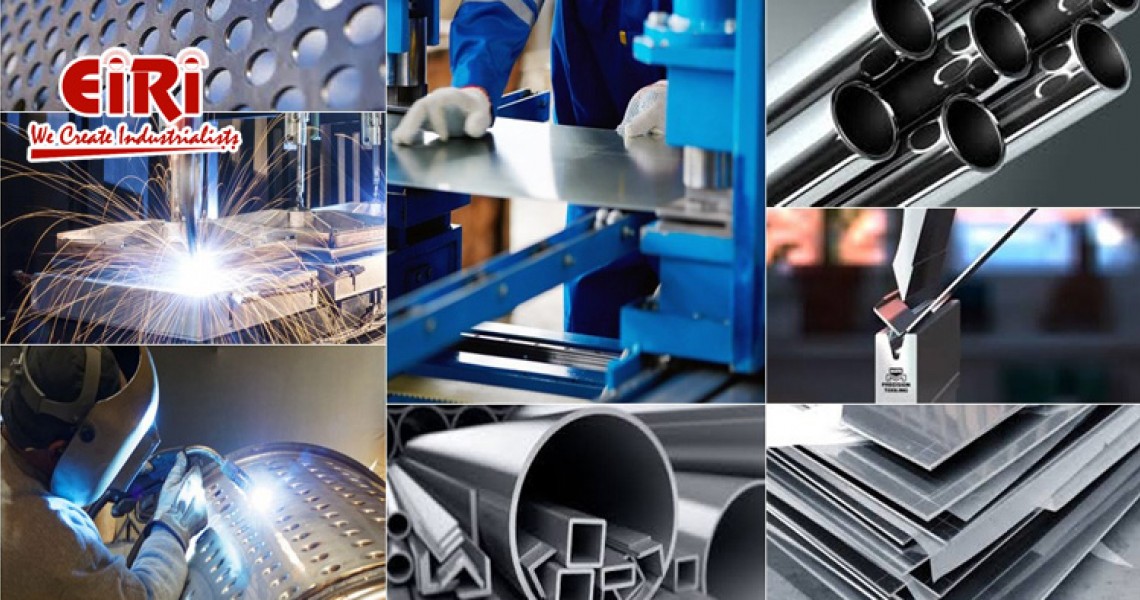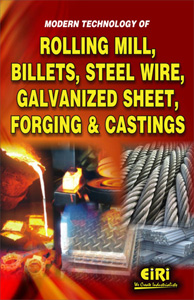The Essential Guide to Starting a Steel Fabrication Business

Steel fabrication is a cornerstone of many industries, from construction to manufacturing, infrastructure development, and beyond. With the global demand for steel expected to continue rising, starting a steel fabrication business presents a lucrative opportunity for aspiring entrepreneurs. In this comprehensive guide, we'll explore everything you need to know to launch and grow a successful steel fabrication venture, from understanding the market and industry dynamics to setting up your workshop, acquiring equipment, and attracting clients.
In the heart of modern construction and industrialization lies the intricate art of structural steel fabrication. This process, orchestrated by skilled steel fabricators, is a symphony of precision, transforming raw materials into a myriad of shapes and structures that form the backbone of our built environment. From towering skyscrapers to intricate industrial equipment, structural steel fabrication plays a pivotal role in bringing architectural visions to life.
At its core, structural steel fabrication is a multifaceted endeavor that involves a spectrum of services. These encompass metal welding, machining, forming, cutting, shearing, folding, rolling, punching, and stamping. Each step is meticulously executed to craft steel components of various sizes and shapes, tailored to the exact specifications required for diverse applications. Whether it's carbon steel for rugged durability, alloy steel for enhanced strength, or stainless steel for corrosion resistance, the versatility of structural steel fabrication knows no bounds.
In recent years, the structural steel fabrication market has witnessed exponential growth, propelled by a confluence of factors. The market, valued at $153.85 billion in 2023, surged to $168.63 billion in 2024, boasting a remarkable compound annual growth rate (CAGR) of 9.6%. This meteoric rise can be attributed to a construction boom fueled by rapid urbanization, industrialization trends, substantial government investments in infrastructure, and the inherent cost-effectiveness of structural steel solutions.
Looking ahead, the trajectory of the structural steel fabrication market promises even greater heights. By 2028, the market is forecasted to reach a staggering $239.54 billion, with a projected CAGR of 9.2%. This anticipated growth is underpinned by a myriad of factors, including the imperative of infrastructure renewal, population expansion driving demand for residential and commercial spaces, the adoption of sustainable construction practices, burgeoning growth in the energy sector, and continuous technological innovation reshaping design paradigms.
As the structural steel fabrication landscape evolves, several trends are poised to define its future trajectory. Heightened emphasis on safety and quality standards will drive innovation in fabrication techniques, ensuring structures are built to withstand the test of time. The integration of 5G technology will revolutionize communication and collaboration, streamlining project management and enhancing efficiency. Furthermore, the adoption of augmented reality (AR) and virtual reality (VR) will usher in a new era of design visualization, allowing stakeholders to immerse themselves in virtual environments and refine concepts with unparalleled precision.
Moreover, customization and personalization will emerge as key drivers of customer engagement, as clients seek bespoke solutions tailored to their unique needs and preferences. This trend will spur collaborations for research and development, fostering a culture of innovation and propelling the industry forward into uncharted territories.
The world of structural steel fabrication is a dynamic and ever-evolving realm, brimming with opportunities for growth and innovation. As we embark on this journey of discovery, we invite you to join us in unraveling the mysteries of this captivating industry, where creativity, craftsmanship, and cutting-edge technology converge to shape the world around us.
Starting a Steel Fabrication Business
Before diving into the world of steel fabrication, it's crucial to gain a deep understanding of the market landscape. Research current trends, demand patterns, and key players in the industry. Identify your target market segments, such as construction firms, architects, manufacturers, or infrastructure developers, and assess their specific needs and preferences.
The steel fabrication industry is highly competitive and dynamic, with evolving technologies, regulations, and market trends shaping its trajectory. Stay abreast of industry developments, including advancements in fabrication techniques, safety standards, and environmental regulations. Networking with industry professionals, joining trade associations, and attending conferences and expos can provide valuable insights and opportunities for growth.
Setting Up Your Workshop:
One of the first steps in launching a steel fabrication business is establishing your workshop or fabrication facility. Choose a location that offers ample space for fabrication work, storage of raw materials and finished products, and accessibility for transportation and logistics. Ensure compliance with zoning regulations, building codes, and safety standards to create a safe and efficient working environment.
Acquiring Equipment:
Investing in the right equipment is essential for the success of your steel fabrication business. Determine the specific fabrication processes you'll be undertaking, such as cutting, welding, bending, and assembling, and acquire equipment accordingly. Common tools and machinery used in steel fabrication include cutting torches, welding machines, plasma cutters, press brakes, and CNC machining centers. Consider both new and used equipment options based on your budget and operational needs.
Hiring Skilled Labor:
Skilled labor is the backbone of any successful steel fabrication business. Recruit experienced fabricators, welders, machinists, and technicians who possess the necessary expertise and qualifications to deliver high-quality workmanship. Invest in ongoing training and professional development programs to upskill your workforce and stay ahead of industry trends and advancements.
Quality Assurance and Safety:
Maintaining high standards of quality and safety is paramount in the steel fabrication industry. Implement comprehensive quality assurance processes to ensure that all fabricated products meet or exceed customer specifications and industry standards. Adhere to strict safety protocols and provide your employees with the necessary training, protective equipment, and safety measures to prevent accidents and injuries in the workplace.
Marketing and Business Development:
Once your steel fabrication business is up and running, it's time to focus on marketing and business development efforts to attract clients and generate revenue. Develop a strong brand identity and online presence through a professional website, social media profiles, and digital marketing campaigns. Network with potential clients, industry partners, and procurement professionals to establish strategic partnerships and secure lucrative contracts.
Adapting to Industry Trends:
As the steel fabrication industry evolves, it's essential to stay agile and adaptable to emerging trends and technologies. Keep an eye on advancements in automation, robotics, digital fabrication, and sustainable practices that can enhance efficiency, productivity, and environmental sustainability in your operations. Embrace innovation and be willing to invest in new technologies and processes that can give your business a competitive edge in the marketplace.
Starting a steel fabrication business is a rewarding venture that offers immense potential for growth and success. By understanding the market, investing in quality equipment and skilled labor, prioritizing safety and quality assurance, and implementing effective marketing and business development strategies, you can build a thriving enterprise that meets the needs of clients and contributes to the growth of the steel fabrication industry. With dedication, hard work, and a commitment to excellence, the sky's the limit for your steel fabrication business.













